Permanent exhibition
EXHIBITION
KLIMT ⇄ WARHOL
Modern Masterpieces: Empowering Minds, Inspiring Hearts
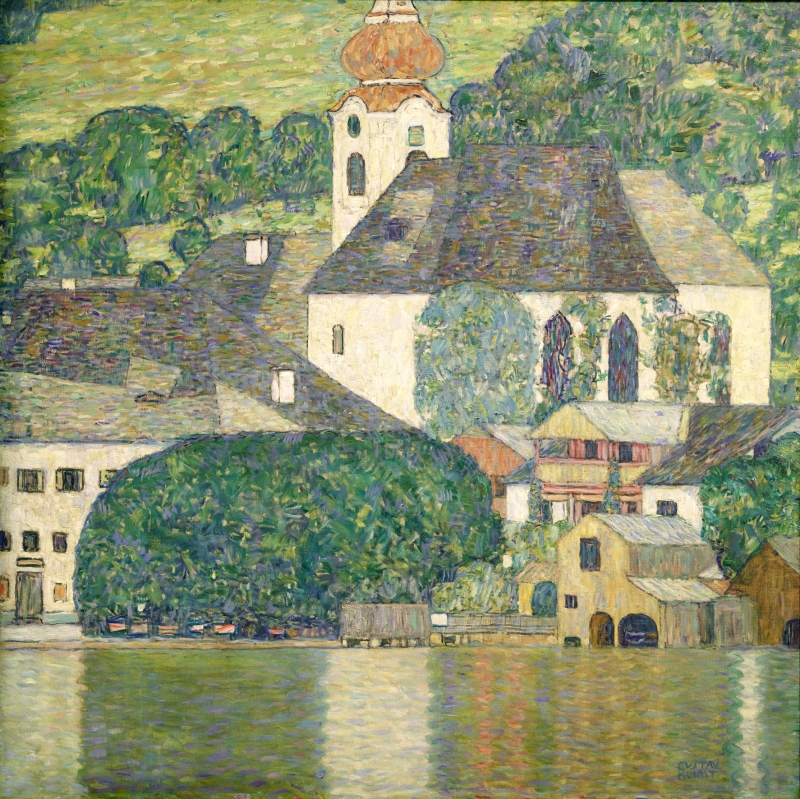
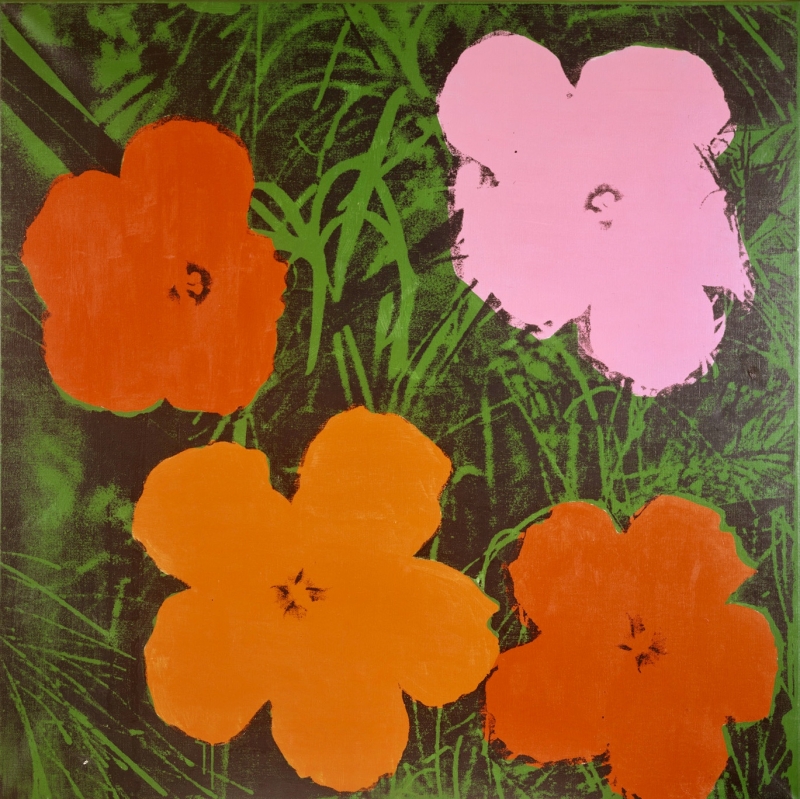
Gustav Klimt, Kirche in Unterach am Attersee, 1916 © Heidi Horten Collection
Andy Warhol, Four-Foot Flowers, 1964 © The Andy Warhol Foundation for the Visual Arts, Inc./Licensed by Bildrecht, Wien, 2024, Foto: Heidi Horten Collection
The selection of works for the new Klimt ⇄ Warhol permanent exhibition was shaped by visitors to the Heidi Horten Collection as part of the innovative, participatory #ARTfluence project. In the spirit of active participation, they had around nine months to vote for their favorite works in the collection and thus have a direct influence on the new permanent exhibition.
Highlights of 20th and 21st century art history have been brought together in an exhibition entitled Klimt to Warhol. Different artistic trends and movements such as Vienna around 1900, German Expressionism, the Surrealism of René Magritte, European and American abstraction of the post-war period, the figuration of Francis Bacon, Pop Art, works by the ZERO artists' group and contemporary positions are combined in a presentation that reveals the versatility of the Heidi Horten Collection.
From 6 September 2024
Buy Tickets now
The display of the collection presentation on the ground floor of the museum is being developed by the Austrian artist Markus Schinwald in close cooperation with the Heidi Horten Collection. The aim is to present the collection's masterpieces in a unique way and to stand out from conventional museum exhibitions, giving the Heidi Horten Collection a special unique selling point.
Schinwald's wall design creates a representative yet intimate atmosphere. The allusions to bourgeois interiors reflect the private origins of the collection. The design of the walls integrates around 50 selected works into an overall artistic setting in which art and visitors can enter into a free dialog with one another. Two wall elements with portholes echo the design of the Tea Room and create new lines of sight and movement in the entrance area of the museum.
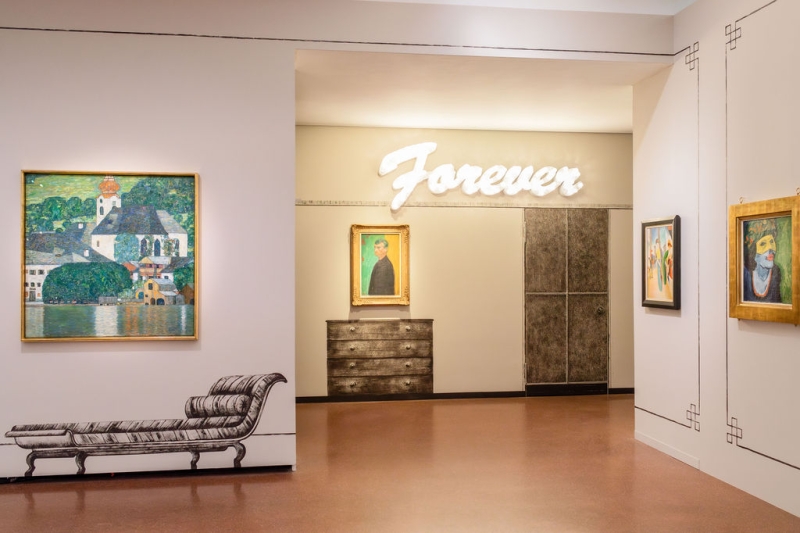
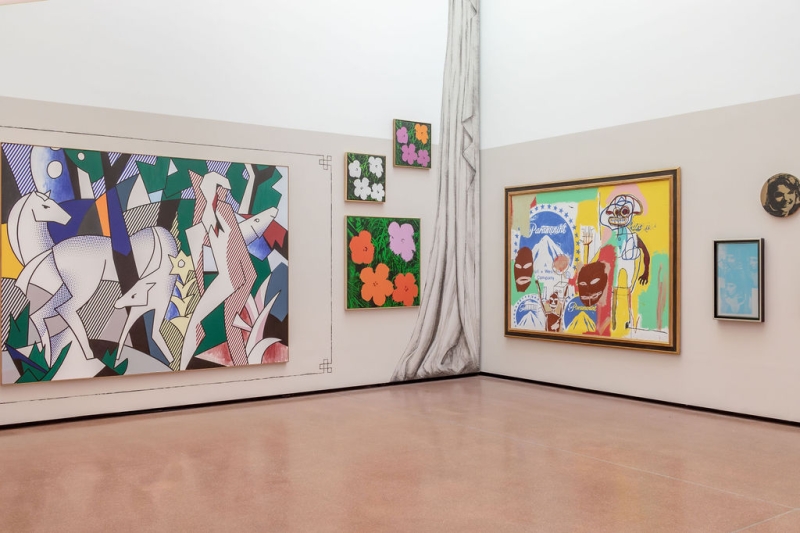
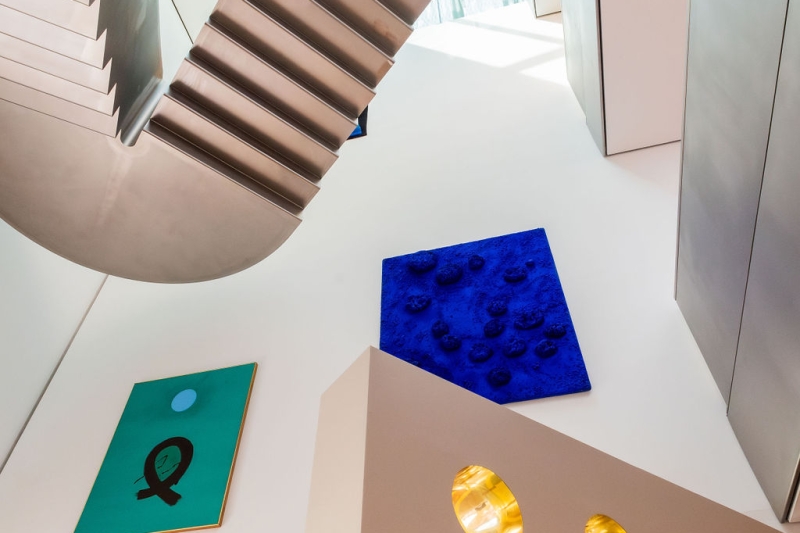
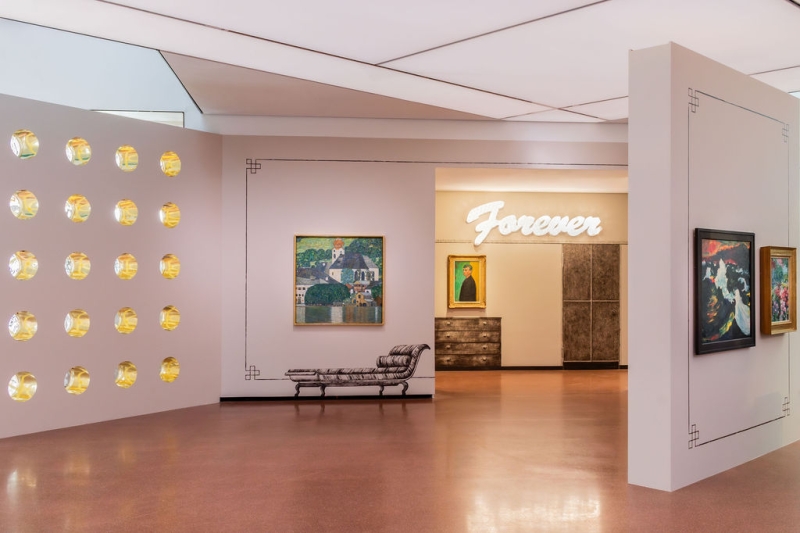
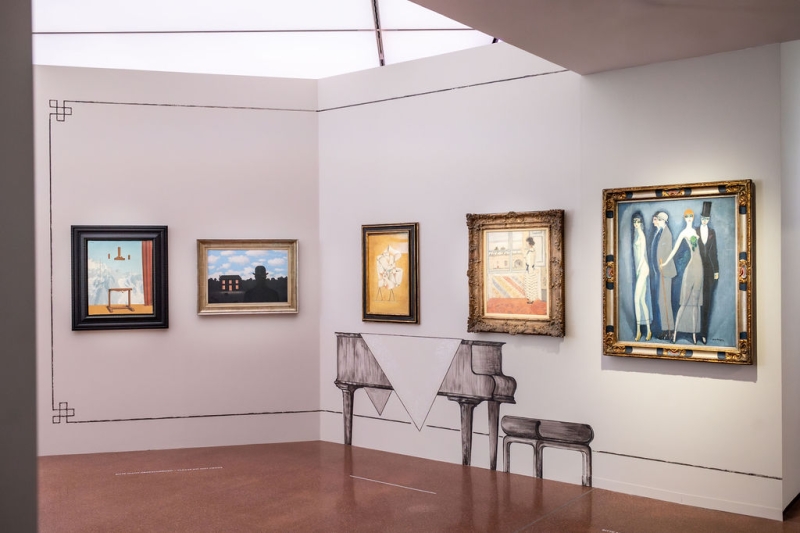
Exhibition view: Klimt ⇄ Warhol
Photos: Ouriel Morgensztern
© Heidi Horten Collection
Artistic interventions
exhibition
Tea Room
The building for the Heidi Horten Collection is characterised by a playful interchange of historic and contemporary elements, reflecting in diverse ways the collector’s interests. The tea-room, a small room in the classic style on the museum’s first floor, is a place for relaxation and contemplation, with artistic interventions positioning it within the tradition of courtly and upper-class reception halls. The velvety crimson ceiling relief by Hans Kupelweiser lends the space a sumptuous, fantastic atmosphere and evokes the frescoes of Baroque palaces in its function. Together with furniture by Markus Schinwald, the wall design and bespoke tapestries create a Gesamtkunstwerk with a contemporary air.
In the neighbouring Albertina – the former palace of Duke Albert of Saxe-Teschen – and the Vienna State Opera across the street, opulent salons can still be found to this day. These rooms served as private retreats for the lady or master of the house and could also function as intimate reception rooms, for example on opera visits by the emperor and empress. The tea-room at the Heidi Horten Collection continues this tradition, combining private and public, while simultaneously serving as a mirror for the collector and patron Heidi Goëss-Horten, her love of art and her desire to bring together old and new.
The artists in conversation about their interventions for the museum.
HANS KUPELWIESER
Kupelwiesers works seem trying to turn "natural" properties of surfaces or structures into their opposite. This becomes particularly clear with his inflated aluminum sculptures, which are installed oversized in the outdoor space. They appear light and fragile, as if they would float away like balloons untied.
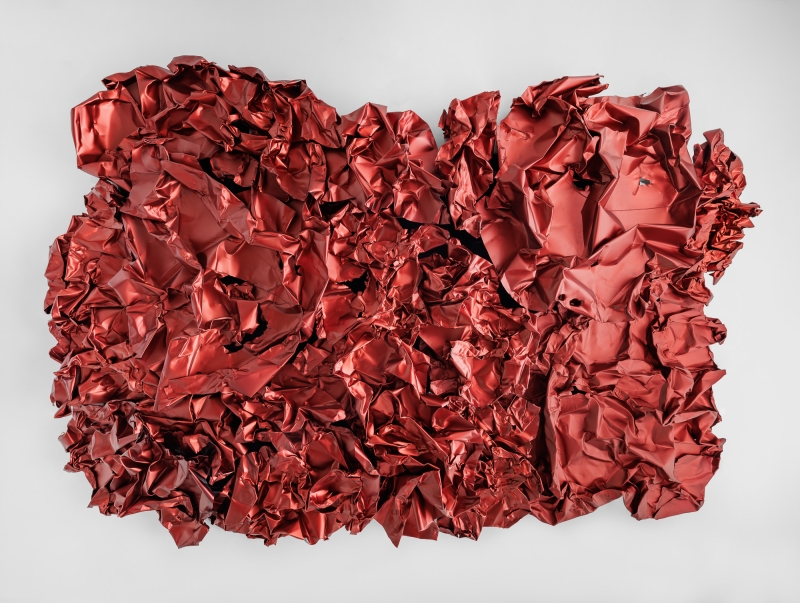
Hans Kupelwieser - Ceiling relief
Deckenrelief, 2022 Photo © kunst-dokumentation.com/Manuel Carreon Lopez Heidi Horten Collection, © Bildrecht, Vienna 2022
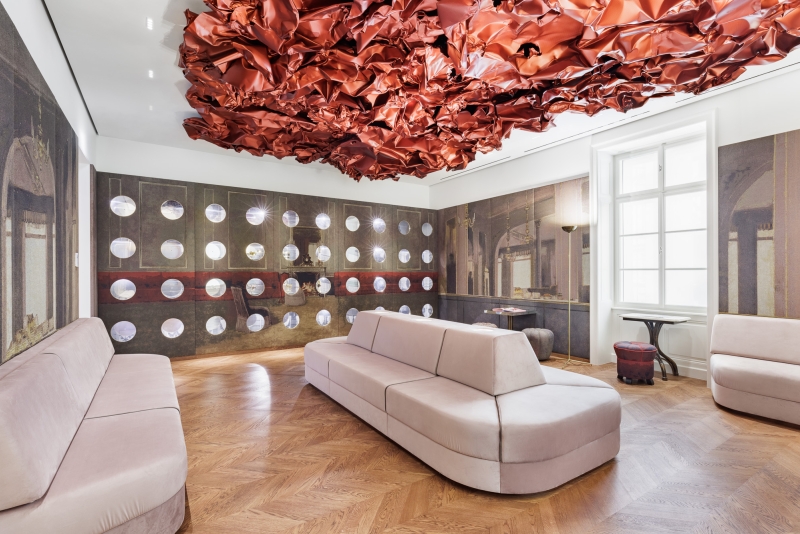
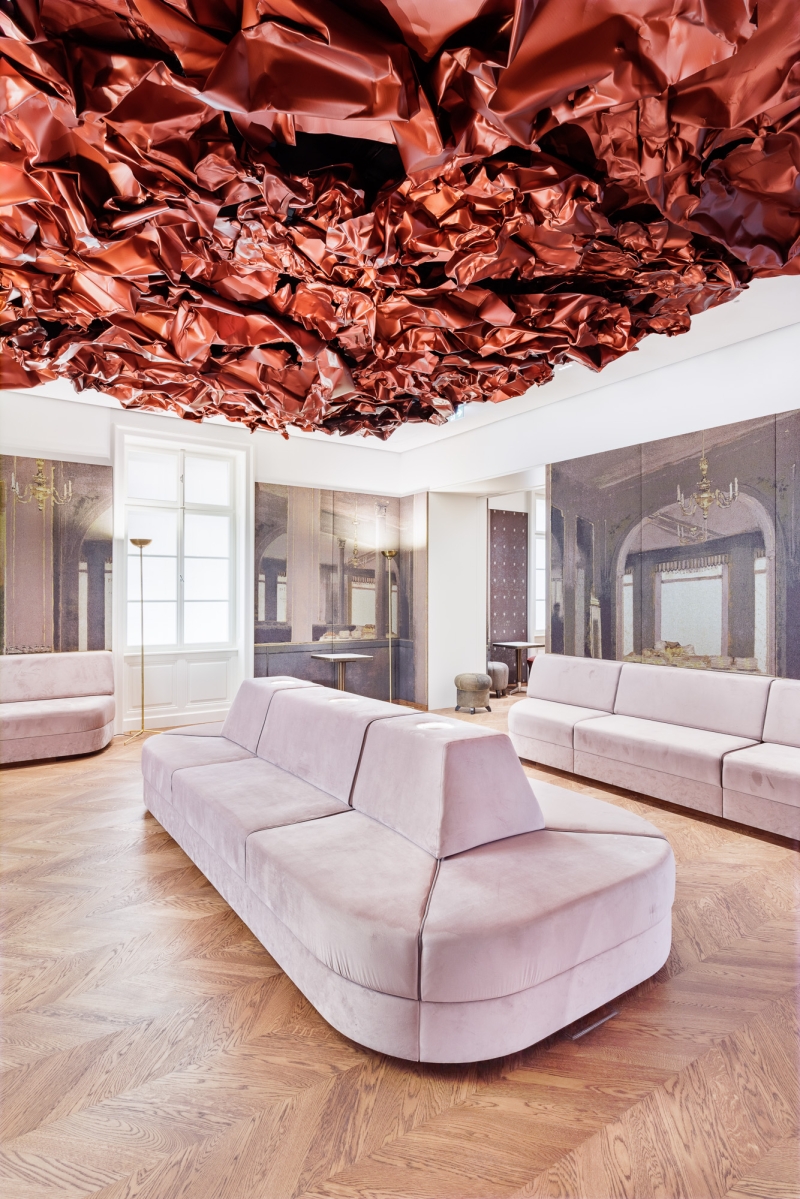
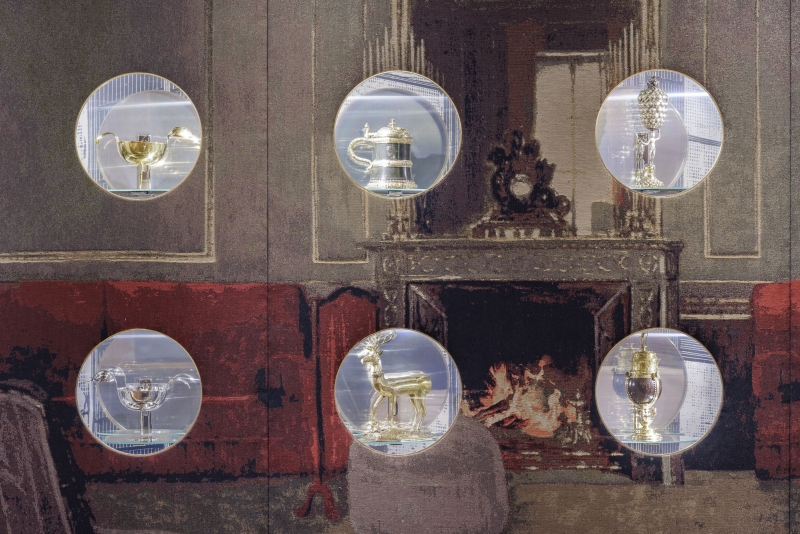
Markus Schinwald - Vitrine wall
MARKUS SCHINWALD
Markus Schinwald was invited to develop a form for the presentation of small-format treasures from the Heidi Horten Collection for the Tea Room. His concept envisages a textile-covered showcase wall, behind which handicraft objects are displayed on racks. They can be viewed through gold-framed, glass portholes that run through the entire wall and allow viewers to immerse themselves in another collection area by bending and stretching.
Museum restrooms
ANDREAS DUSCHA
Historical events and incidents, with facts between phenomenon and absurdity, form the point of departure for the work of Andreas Duscha. In it, the artist frequently foregrounds the trivial and the seemingly insignificant to highlight greater historical contexts and their impacts on humanity and society. Conceptual approaches intertwine with experiments in materials and techniques, which he examines in terms of their aesthetic qualities. His work with analogue, sometimes antiquated photographic techniques, reproduction processes and silver-nitrate mirrors represents a constant in his artistic practice.
For the corridors to the museum restrooms, the artist produced four works featuring mirrors he manufactured using a formula from the seventeenth century. Each of the works portrays bouquets or arrangements of various flowers and plants as representations of societal crises. One bouquet is composed of flowers which gave their name to political upheavals, such as the Carnation Revolution in Portugal in 1974, the Tulip Revolution in Kyrgyzstan in 2005 or the Rose Revolution in Georgia in 2003. Another refers to the Dutch “Tulip Mania” of 1637, during which tulips were used as tools for speculation and which can now be viewed as the first financial bubble in history. A further work is concerned with neophytes, invasive, non-native plant species which negatively impact ecosystem biodiversity. The fourth mirror portrays mythological plants which, like the opium poppy, have consciousness-altering properties.
Website Andreas Duscha
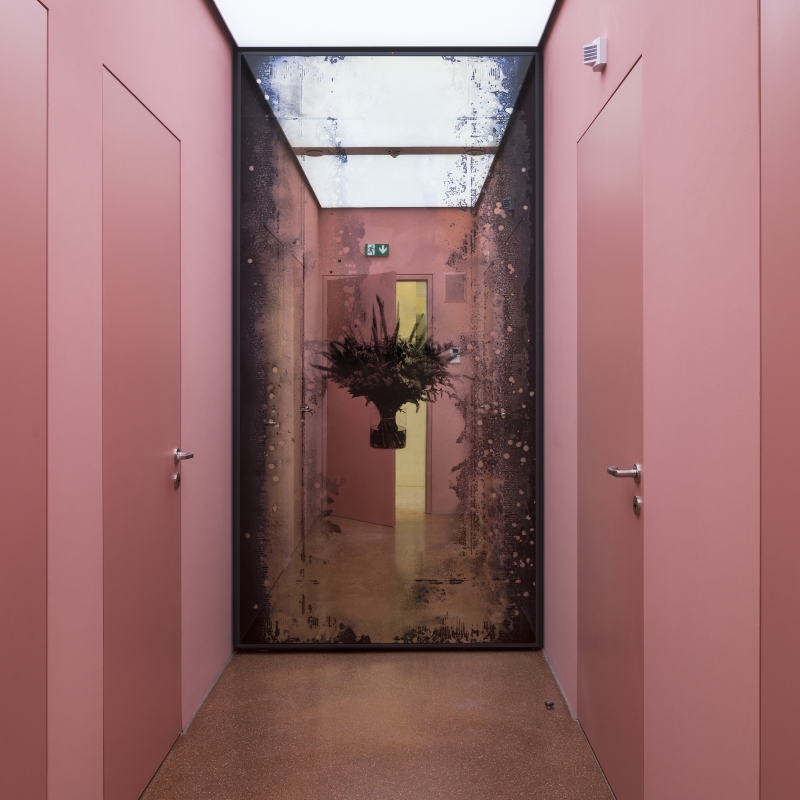
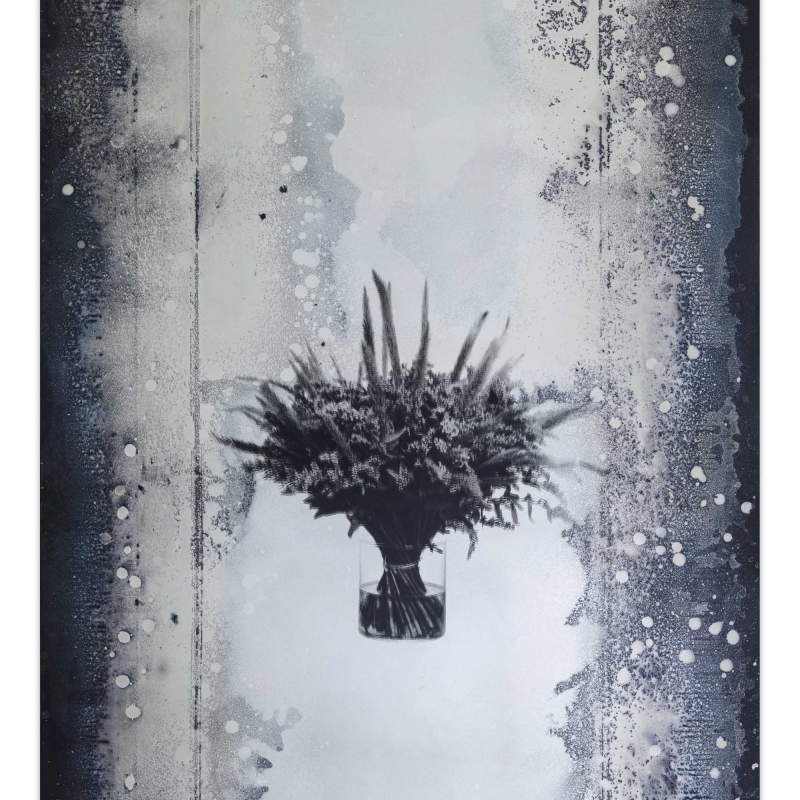
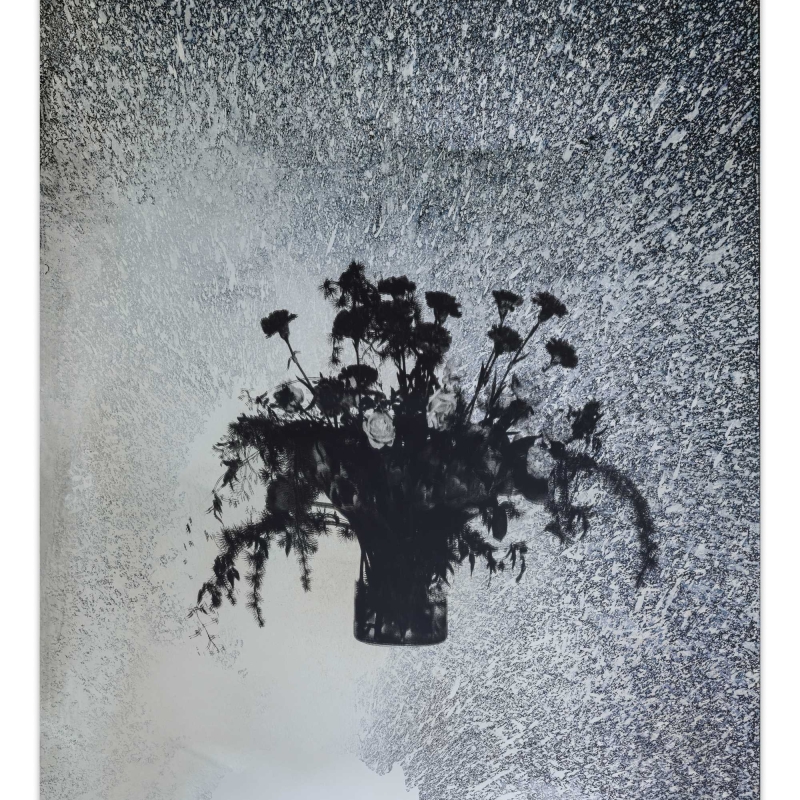
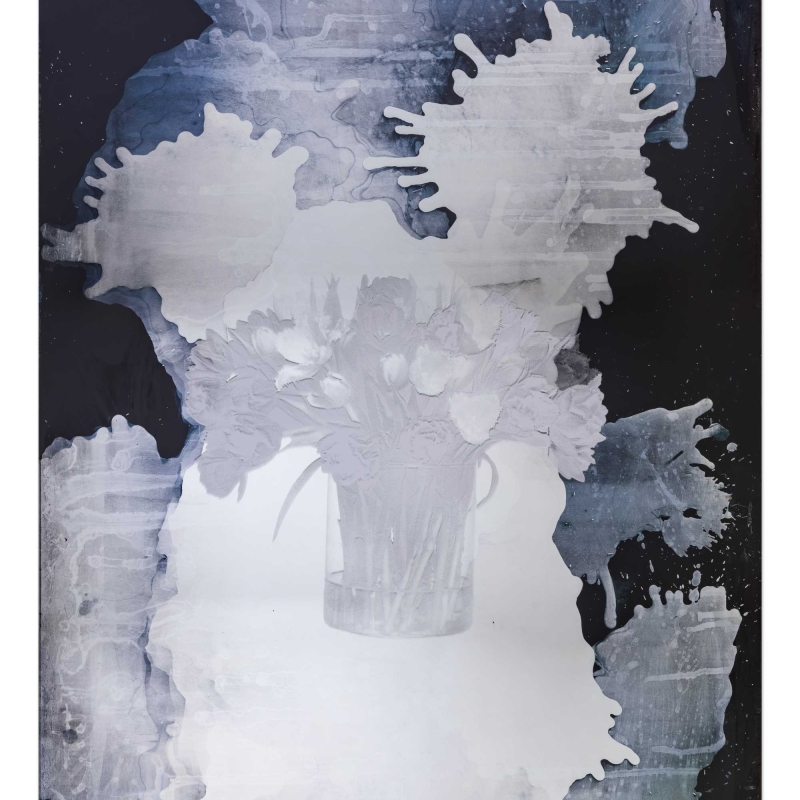
Mirrors - Andreas Duscha
Permanent Exhibition: KLIMT WARHOL
Experience Great Art – You Helped Choose It!
(Ground floor of the Heidi Horten Collection)
This exhibition shows important modern artworks from the 20th and 21st century.
Visitors helped to create this exhibition.
They took part in the project called #ARTfluence.
For almost nine months, they could vote for their favourite artworks.
The artworks with the most votes are now on display.
You can read more about the project online.
What Can You See in the Exhibition?
The exhibition shows many styles of modern art, such as:
• Viennese Art around 1900 (for example, Gustav Klimt)
• German Expressionism
• Surrealism (like René Magritte)
• Abstract art after World War II (from Europe and the USA)
• Figurative art (like Francis Bacon)
• Pop Art (like Andy Warhol)
• Works by the ZERO group
• And contemporary art – art from today
All these works show the great variety of the Heidi Horten Collection.
Special Museum Design
The Austrian artist Markus Schinwald helped design the exhibition.
He had a creative idea for the walls:
They look like old living rooms.
This shows: The art comes from a private collection.
Around 50 artworks were chosen.
They are shown in an artistic installation.
This means: The artworks are presented in a creative way – not like in a traditional museum.
At the entrance, there are two special wall elements with round windows.
They look like the Tea Room and offer new views into the exhibition space.
In this exhibition, visitors can discover art in a completely new way –
and move freely through the space.
The exhibition connects big names in art history with a unique presentation.
This makes the Heidi Horten Collection truly special.

